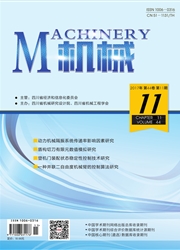

 中文摘要:
中文摘要:
地音传感器被广泛采用串联校正方法进行低频扩展以实现对低频及超低频振动的准确测量,电气噪声是影响其低频扩展范围的关键因素。建立了包含测量、预放大、传输及串联校正环节在内的多输入单输出地音传感器测振模型,定量分析了初、次级电气噪声水平与地音传感器低频扩展范围之间的关系。研究结果表明,初级电气噪声是限制地音传感器低频扩展范围的主要因素,次级噪声的影响主要取决于其与初级噪声的幅值之比及预放大倍数,影响程度较小。据此研究方法,可方便求得某一地音传感器在一定电气噪声水平下可获得的最低测振频率,为地音传感器的选型及低频测振应用提供了依据。
 英文摘要:
英文摘要:
Series correction method is widely used in low frequency extension of geophone to make the sensor to measure low frequency or ultra-low frequency vibration accurately. And electrical noise is the key influence factor which determines the low frequency extension range. This article establishes a multi-input single-output measurement model of geophone including measurement, amplification, transportation and series correction, and analyzes the relationship between electrical noise and low frequency extension range of geophone. The conclusion shows that the primary electrical noise is the key influence factor and the secondary noise has less influence which depends on the magnitude ratio of the secondary noise, primary noise and its amplification. This method is easy to decide the low frequency extension range of geophone if the electrical noise is given, and can be used to decide geophone specification and in low frequency vibration measurement.
 同期刊论文项目
同期刊论文项目
 同项目期刊论文
同项目期刊论文
 期刊信息
期刊信息
